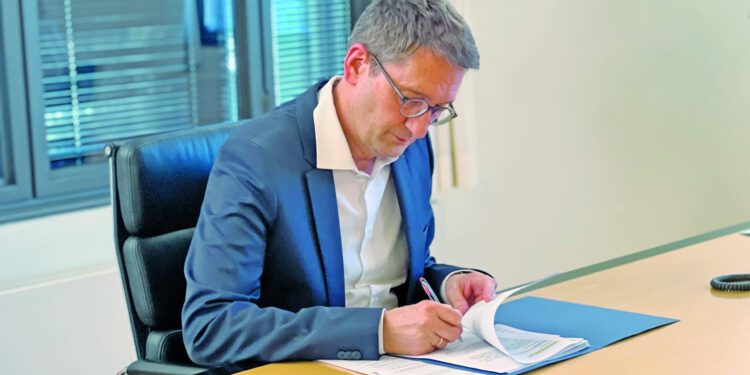The SPD, Greens and FDP have given a lot of space to the topics of digitization and mobility transition in their coalition agreement. The Ministry of Transport and Digital (BMDV) is to implement these plans. In both areas, blockchain technology could provide answers to previously unresolved questions, says Stefan Schnorr.
How digital and innovative is Germany?
Schnorr: I believe that Germany is more digital and also much more innovative than we think – not only in the digital sector, but in many other areas as well. However, we also have some catching up to do when it comes to digitization, there is no question at all. The crucial thing, I think, is that we don’t have a digital administration. E-government is still largely a foreign word for us.
You will notice this, for example, if you want to register or re-register. You have to hope for days that you will find a free appointment online, I can tell from my own experience. This is not yet fully digital at the moment. We do not yet have an electronic identity with which we could identify ourselves – as with our analogue identity card – in order to use digital administrative services. We set out to change that.
What is the importance of the blockchain in coping with the task?
Schnorr: As a government, we should not dictate which technology is used to solve a problem. Of course, however, we also see the opportunities that digital future technologies such as blockchain and artificial intelligence bring. Let’s take, for example, the digital proof of identity again – especially when it comes to counterfeit protection, blockchain technology will open up real added value for us in the future.
In the end, we need to see: where are the best results? Where is the least effort, including – and we must always bear this in mind – the least energy consumption? We cannot use technologies – and this is especially true with blockchain – to generate massive energy consumption and ignore the issue of sustainability.
Three years ago, a project that was supposed to create a mobility platform for citizens using blockchain ended. What is the current status?
Schnorr: They respond to the feasibility study “OMOS”. In it, the majority of the experts interviewed named blockchain or digital ledger technology as a potential solution for a variety of challenges of an open mobility platform. For example, in identity management or payment processing. These findings have already been taken up in several projects, including the “OMEI” project to optimize the electric charging infrastructure.
Basically, our approach is to combine various modes of transport and to think in a networked way. This is also what our Minister said from the very beginning when he came to the house here. So far, however, the perspective of the citizen has been taken into account less.
They asked me how I got to work. First, of course, I’ll see how I can get to the ministry as quickly as possible from home on Invalidenstraße. There are Google Maps. But we actually do not yet have this so-called egg-laying woolly sow of mobility.
You can find the complete interview in the current August issue of BTC-ECHO magazine. In addition to the blockchain expertise of Digital Minister Volker Wissing (FDP), it is also about the fuel discount and a possible extension of the 9 euro ticket.









